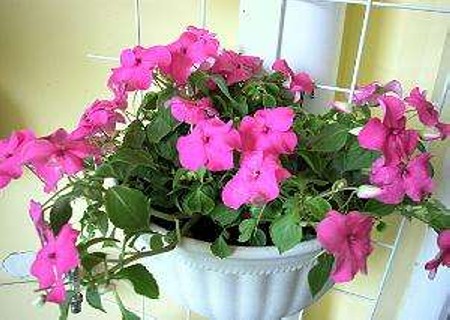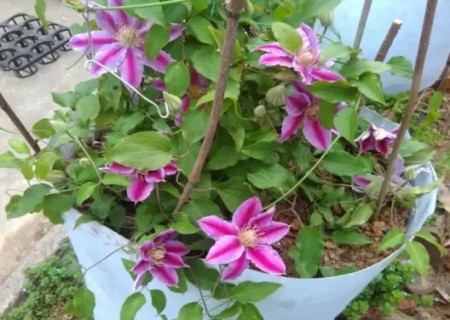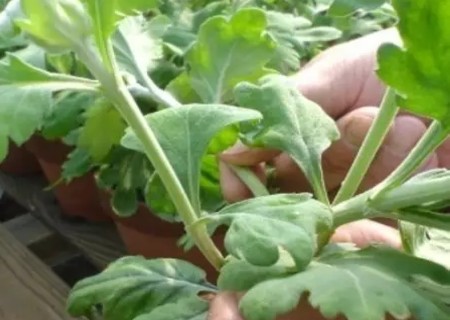How to cut African Impatiens
There are many nicknames for African impatiens, such as Sudan impatiens, glass Cui and so on. This plant generally does not grow very tall, and the flowers are colorful and rich, so it is very suitable for potted plants. The stems and leaves of African impatiens are very bright and clean, the number of flowers is also very large, and the gorgeous and bright color is pleasing to the eye. It is a famous decorative flower plant, but it is often used as a landscape.

African impatiens mostly use cutting to breed young plants. as long as the cutting method is correct and the later maintenance and management method is scientific and reasonable, the root system can germinate in 7-10 days. So, how do potted African impatiens propagate? Next, the editor will share it for you.
1. Make cuttings
Since it is cuttage propagation, we need to make cuttings first. Generally cut some branches from the adult plant, when making cuttings with terminal buds, retain 3-5 nodes, and about 5-10 cm long as the basis, cut the branches into stem segments as cuttings.
2. Cuttings treatment
After the branches are trimmed into stem segments of a certain length, the buds and flowers on the stem segments are removed, and then the leaves in the lower part of the stem segments are removed, leaving only a few leaves in the upper part of the stem segments.
3. Cutting process
Prepare a flowerpot with a diameter of about 7.5 cm, then put the prepared matrix such as perlite into the flowerpot, poke some holes of the right size in the culture soil with the help of chopsticks or branches, and then insert the cuttings into the hole. About 3-5 cuttings are inserted into each flowerpot about 7.5 cm in diameter.
4. Close the mouth of the basin
After all the cuttings are inserted into the basin soil, take a cling film and cover it on the basin mouth to play a sealing role. The advantage of this is to prevent the evaporation of water in the basin to maintain the humidity of the soil, which is more conducive to the germination of cuttings.
5. Label it.
After covering the fresh-keeping film at the mouth of the flowerpot, label it on the plastic film or on the outer wall of the pot to mark the plant species and name of the cutting, as well as the cutting date, so that we can better record the cutting.
6. Transplant into pot
Usually after 2-3 weeks, the cuttings can sprout roots. After the root system of the cutting seedling has germinated, we can transplant it into the pot. So, how to transplant the cuttage seedlings on the pot?
1) also choose a flowerpot with a diameter of 7.5 cm, then put in the culture soil that accounts for 1pm 3 of the flowerpot, and then add some slow-release fertilizer as the base fertilizer.
2) take the cuttage seedlings with good rooting condition from the cultivation pot, then plant them into the new pot, then fill the whole flowerpot with the culture soil, and finally carefully compact the soil around the plant.
3) after the cuttage seedlings are planted, the young plants can be treated with coring, which can ensure that the young plants germinate more lateral branches and gradually improve the beautiful plant type of African impatiens potted plants. (written by: laughing Book 2017-08-28 21:10)
Time: 2019-06-08 Click:
- Prev

Diagram of Clematis Cuttage course
Clematis is a perennial herb, although its stem is relatively small, but it can grow very long, and it is very strong and tough, so it is called clematis. Even if the stem is slender, its blooming flowers are very beautiful, and the flowers are rich in color and pleasant in fragrance, so they can not only be used as cut flowers.
- Next

Cutting technique of potted Chrysanthemum
Chrysanthemum is not only one of the four famous flowers in China, but also one of the four fresh cut flowers in the world, and there are many varieties, which can not only be decorated with garden flower beds and mirrors, but also be planted as potted plants or made into bonsai with high ornamental value. Chrysanthemum is a kind of potted flower plant which is resistant to ornamental.
Related
- Fuxing push coffee new agricultural production and marketing class: lack of small-scale processing plants
- Jujube rice field leisure farm deep ploughing Yilan for five years to create a space for organic food and play
- Nongyu Farm-A trial of organic papaya for brave women with advanced technology
- Four points for attention in the prevention and control of diseases and insect pests of edible fungi
- How to add nutrient solution to Edible Fungi
- Is there any good way to control edible fungus mites?
- Open Inoculation Technology of Edible Fungi
- Is there any clever way to use fertilizer for edible fungus in winter?
- What agents are used to kill the pathogens of edible fungi in the mushroom shed?
- Rapid drying of Edible Fungi

